Make use of this in-depth nursing care plan and management guide to aid in the care of patients with sepsis. Expand your knowledge base of nursing assessments, interventions, goal setting, and nursing diagnoses, to meet the distinct needs of patients with sepsis.
What is Sepsis?
Sepsis is a systemic response to infection; it may occur after a burn, surgery, or a serious illness and is manifested by two or more clinical symptoms: temperature of more than 38°C or less than 36°C, heart rate of more than 90 beats per minute, respiratory rate of more than 20 breaths per minute, PaCO2 of below 32 mmHg, white blood cell count of more than 12,000 cells/mm3, less than 4,000 cells/mm3 or greater than 10% of bands or immature cells, hyperglycemia, bleeding, and abnormal clotting. Sepsis is a response of the body’s immune system that results in organ dysfunction or failure.
Severe sepsis is defined as sepsis complicated by organ dysfunction. Multiple organ dysfunction syndrome (MODS) is characterized by progressive organ dysfunction in a severely ill client, with failure to maintain homeostasis without intervention such as pressors or IV fluids.
Septic shock is defined as sepsis with hypotension requiring vasopressor therapy to maintain a mean blood pressure of more than 65 mm Hg and a serum lactate level exceeding 22 mmol/L (18 mg/dL) after adequate fluid resuscitation. Pseudosepsis is defined as fever, leukocytosis, and hypotension due to causes other than sepsis (Bokhari & Stuart, 2023).
The etiology of sepsis is diverse, and clinical clues to various organ systems aid in appropriate workup and diagnosis. It is pertinent to be able to distinguish between the infectious and noninfectious causes of fever in a septic client (Bokhari & Stuart, 2023).
The pathophysiology of sepsis is complex and results from the effects of circulating bacterial products, mediated by cytokine release, caused by sustained bacteremia. Cytokines are responsible for the clinically observable effects of bacteremia in the host (Bokhari & Stuart, 2023).
Nursing Care Plans and Management
Nursing care management for patients with sepsis or septic shock involves prompt assessment and monitoring of vital signs, fluid resuscitation with intravenous fluids, timely administration of appropriate antibiotics, hemodynamic support with vasoactive medications, ensuring adequate oxygenation and respiratory support, implementing infection control measures, providing nutritional support, offering psychosocial support to patients and families, and educating them about sepsis signs and symptoms, as well as discharge planning. Individualized care is necessary based on the patient’s condition, severity, and hospital protocols.
Nursing Problem Priorities
The following are the nursing priorities for patients with sepsis:
- Early recognition and diagnosis as sepsis is a medical emergency
- Fluid resuscitation
- Administering antibiotic therapy
Nursing Assessment
Assess for the following subjective and objective data:
- Flushed skin, warm to touch
- Increased body temperature higher than the normal range
- Increased respiratory rate, and tachycardia
- Inaccurate follow-through of instructions, and development of preventable complications
- Questions, requests for information, statements of misconception
Assess for factors related to the cause of sepsis:
- Compromised immune system.
- Failure to recognize or treat infection and/or exercise proper preventive measures.
- Invasive procedures, and environmental exposure (nosocomial).
- Reduction of arterial/venous blood flow: selective vasoconstriction, vascular occlusion–intimal damage, microemboli.
- Relative or actual hypovolemia.
- Altered oxygen supply–effects of endotoxins on the respiratory center in the medulla (resulting in hyperventilation and respiratory alkalosis); hypoventilation.
Nursing Diagnosis
Following a thorough assessment, a nursing diagnosis is formulated to specifically address the challenges associated with sepsis based on the nurse’s clinical judgement and understanding of the patient’s unique health condition. While nursing diagnoses serve as a framework for organizing care, their usefulness may vary in different clinical situations. In real-life clinical settings, it is important to note that the use of specific nursing diagnostic labels may not be as prominent or commonly utilized as other components of the care plan. It is ultimately the nurse’s clinical expertise and judgment that shape the care plan to meet the unique needs of each patient, prioritizing their health concerns and priorities.
Nursing Goals
Goals and expected outcomes may include:
- The client will achieve timely healing; be free of purulent secretions, drainage, or erythema; and be afebrile.
- The client will display adequate perfusion as evidenced by stable vital signs, palpable peripheral pulses, skin warm and dry, usual level of mentation, individually appropriate urinary output, and active bowel sounds.
- The client will display ABGs and respiratory rate within the normal range, with breath sounds clear and chest x-ray clear or improving.
Nursing Interventions and Actions
Therapeutic interventions and nursing actions for patients with sepsis may include:
1. Initiating Infection Control and Prevention
Clients with sepsis are at an increased risk for infection due to the compromised immune system and the presence of pathogenic microorganisms. The systemic inflammatory response can also damage the body’s tissues, resulting in impaired host defenses and further increasing the risk of infection. Abnormal host immune responses may increase susceptibility to severe disease and mortality (Bokhari & Stuart, 2023). Initiating infection control and prevention measures in patients with sepsis is of paramount importance to mitigate the spread of infection and improve patient outcomes. The initial step involves promptly identifying and isolating the source of infection, such as through blood cultures or diagnostic imaging, to guide appropriate antimicrobial therapy. Implementing strict infection control practices in healthcare settings plays a vital role in reducing the risk of hospital-acquired infections.
1. Assess the client for a possible source of infection (e.g., burning urination, localized abdominal pain, burns, open wounds or cellulitis, presence of invasive catheters, or lines).
The most common causes of sepsis are respiratory tract and urinary tract infections, followed by abdominal and soft tissue infections. Other causes of hospital-acquired sepsis are the use of intravascular devices. The etiology of sepsis is diverse, and clinical clues to various organ systems aid in appropriate workup and diagnosis. Sepsis can be caused by an obvious injury or infection or a more complicated etiology such as perforation, compromise, or rupture of an intra-abdominal or pelvic structure (Bokhari & Stuart, 2023).
2. Investigate reports of the pain out of proportion to visible signs.
Pressure-like pain over an area of cellulitis may indicate the development of necrotizing fasciitis due to group A beta-hemolytic streptococci (GABHS), necessitating prompt intervention. Diffuser abdominal pain may suggest pancreatitis or generalized peritonitis, whereas right upper quadrant tenderness may suggest a biliary tract etiology and tenderness of the right lower quadrant suggests appendicitis or Crohn’s disease (Bokhari & Stuart, 2023).
3. Inspect wounds and sites of invasive devices daily, paying particular attention to parenteral nutrition lines. Document signs of local inflammation and infection and changes in character wound drainage, sputum, or urine.
Catheter-related bloodstream infections (CR-BSIs) are increasing where central venous catheters are used in both acute and chronic care settings. Clinical signs, such as local inflammation or phlebitis, may provide a clue to a portal of entry, type of primary infecting organism (s), as well as early identification of secondary infections. However, it is important to note that many clients with central IV line infections do not have superficial evidence of infection at the insertion site. Always suspect IV line infections, especially when other sources of sepsis are eliminated (Bokhari & Stuart, 2023).
4. Inspect the oral cavity for white plaques. Investigate reports of vaginal and perineal itching or burning.
Depression of the immune system and the use of antibiotics increases the risk of secondary infections, particularly yeast-thrush. Vaginal yeast infection can cause itching, burning, or abnormal vaginal discharge. The membranes lining the vagina become red and have a whitish coating. The healthy balance of microorganisms living in the membranes is sometimes disrupted, for instance, through pregnancy or medication, especially antibiotics or steroids (Institute for Quality and Efficiency in Health Care, 2019).
5. Note temperature trends and observe for shaking chills and profuse diaphoresis.
Fever [101°F-105°F (38.5°C-40°C)] is the result of the endotoxin effect on the hypothalamus and pyrogen-released endorphins. Hypothermia lower than 96°F (36°C) is a grave sign reflecting an advancing shock state, decreased tissue perfusion, and failure of the body’s ability to mount a febrile response. Chills often precede temperature spikes in the presence of generalized infection.
6. Monitor for signs of deterioration of the condition or failure to improve with therapy.
Deterioration of a clinical condition or failure to improve with therapy may reflect inappropriate or inadequate antibiotic therapy or overgrowth of resistant or opportunistic organisms. Sepsis is a common cause of mortality and morbidity worldwide. The prognosis depends on underlying health status and host defenses, prompt and adequate surgical drainage of abscesses, relief of any obstruction of the intestinal or urinary tract, and appropriate and early empiric antimicrobial therapy (Bokhari & Stuart, 2023).
7. Obtain specimens of urine, blood, sputum, wound, and invasive lines or tubes for culture, and sensitivity, as indicated.
Identification of the portal of entry and organism causing the septicemia is crucial to effective treatment based on susceptibility to specific medications. Negative blood culture results are also necessary to include pseudo sepsis in the differential diagnosis. If central IV line sepsis is suspected, remove the line and send the tip for semiquantitative bacterial culture (Bokhari & Stuart, 2023).
8. Monitor laboratory studies, such as WBC count with neutrophils and band counts.
The normal ratio of neutrophils to total WBCs is at least 50%; however, when the WBC count is markedly decreased, calculating the absolute neutrophil count is more pertinent to evaluating immune status. Likewise, an initial elevation of band cells reflects the body’s attempt to mount a response to the infection, whereas a decline indicates decompensation. Leukopenia, anemia, and thrombocytopenia may be observed in sepsis (Bokhari & Stuart, 2023).
9. Teach proper hand washing using an antibacterial soap before and after each care activity.
Hand washing and hand hygiene lessen the risk of cross-contamination. Note: Methicillin-resistant Staphylococcus aureus (MRSA) is the most commonly transmitted bacteria via direct contact with healthcare workers who are unable to wash their hands between client contacts. Sepsis can be prevented by proper infection prevention and control measures such as ensuring proper hand hygiene, which can also reduce the need for using antibiotics (European Centre for Disease Prevention and Control, 2018).
10. Maintain sterile technique when changing dressings, suctioning, and providing site care, such as an invasive line or a urinary catheter.
Medical asepsis inhibits the introduction of bacteria and reduces the risk of nosocomial infection. The purpose of creating a sterile field is to reduce the number of microbes present to as few as possible. The sterile field is used in many situations outside the operating room as well as inside the operating room when performing surgical cases. Breaks in aseptic techniques or contamination of sterile fields or supplies cause complications (Tennant & Rivers, 2022).
11. Encourage the client to cover the mouth and nose with a tissue when coughing or sneezing.
Appropriate behaviors such as respiratory hygiene and cough etiquette prevent the spread of infection via airborne droplets. Respiratory infections are quite virulent and easily transmitted throughout populations. Signage around the rooms and the hospital vicinities is helpful to instruct and remind clients to be mindful and respectful of common areas. They should cover their mouth and nose when coughing or sneezing or sneezing with the elbow, wash their hands, and dispose of all the garbage in the proper receptacle (Chavis & Ganesh, 2019).
12. Encourage or provide frequent position changes, deep breathing, and coughing exercises.
A good pulmonary toilet may reduce respiratory compromise. Deep breathing exercises are used to decrease the incidence and severity of pulmonary complications, such as pneumonia, atelectasis, and hypoxemia. During exercise education, the nurse explains and demonstrates how to take a deep, slow breath, and how to exhale slowly, three to five times every one or two hours (Unver et al., 2018).
13. Limit the use of invasive devices and procedures when possible. Remove lines and devices when the infection is present and replace them if necessary.
This reduces the number of possible entry sites for opportunistic organisms. Central IV lines are the lines most commonly associated with bacteremia or sepsis. Peripheral venous lines and arterial lines are rarely associated with bacteremia (Bokhari & Stuart, 2023).
14. Dispose of soiled dressings and other materials in a double bag.
Appropriate disposal of contaminated material reduces contamination and spread of organisms. Garbage receptacles should be readily available for soiled products in operatories as well as common spaces. It is also important to disinfect common areas such as the waiting room, front desk, commonly used items such as pens, and restrooms (Chavis & Ganesh, 2019).
15. Wear gloves and gowns when caring for open wounds or anticipating direct contact with secretions or excretions.
This prevents the spread of infection and cross-contamination. During the current coronavirus pandemic, significant emphasis has been placed on the importance of mitigating the nosocomial spread of COVID-19. One important consideration involves the appropriate use of effective PPEs, which may reduce the healthcare provider’s likelihood of becoming infected while simultaneously minimizing exposure to other clients they care for. This may also reduce demands placed on the healthcare system and help to preserve the workforce (McCarthy, 2020).
16. Provide isolation and monitor visitors, as indicated.
Body substance isolation should be used for all infectious clients. Wound and linen isolation and hand washing may be all that is required for draining wounds. Clients with diseases transmitted through the air may also need airborne and droplet precautions. Standard precautions combine the major features of universal precautions and body substance isolation and are based on the principle that all blood, body fluids, secretions, and excretions except sweat, non-intact skin, and mucous membranes may contain transmissible infectious agents (Centers for Disease Control and Prevention, 2019).
17. Administer medications, as indicated.
See Pharmacologic Management
18. Assist with or prepare for procedures, such as removal of infected devices, incision and drainage of abscess, or debridement of infected wounds, as indicated.
Removal of infection sources promotes healing. By damaging the epithelium and connective structures, and the body’s capability to provide protection from the outer environment is weakened. It is therefore imperative to refabricate a functional epidermis or even other layers of the skin. This happens through a cascade of intersecting phases, known as wound healing or wound repair (Negut et al., 2018).
19. Prepare for hyperbaric therapy, as appropriate.
Exposing wounds to high ambient oxygen tension therapy may be done to fight anaerobic infections. Early hyperbaric therapy may have a positive effect on anti-inflammatory parameters and mortality, while delayed hyperbaric therapy can prevent organ damage from sepsis (Minasyan, 2022).
20. Place in a private room if indicated.
A single-patient room is preferred for clients who require contact and droplet precautions. When a single-patient room is not available, consultation with infection control personnel is recommended to assess the various risks associated with other client placement options. In multi-patient rooms, feet spatial separation between beds is advised to reduce opportunities for inadvertent sharing of items between infected clients and other clients. The spatial separation of >3 feet and drawing the curtain between client beds is especially important for clients in multi-bed rooms with infections transmitted by the droplet route. The preferred placement for clients who require airborne precautions is an airborne infection isolation room (Centers for Disease Control and Prevention, 2019).
21. Wear the appropriate PPEs when providing direct as appropriate.
For some interactions, such as venipuncture, only gloves may be needed; during other interactions, such as intubation, the use of gloves, gowns, face shields, or masks and goggles is necessary. Healthcare personnel caring for clients on contact precautions wear a gown and gloves for all interactions that may involve contact with the client or potentially contaminated areas in the client’s environment. Healthcare personnel wears a mask for close contact with an infectious client; the mask is generally donned upon room entry. For clients under airborne precautions, healthcare personnel should wear a mask or respiratory, depending on disease-specific recommendations (Centers for Disease Control and Prevention, 2019).
22. Provide information about the importance of vaccines to prevent sepsis.
Another important way to reduce the risk of contracting infections is by receiving vaccinations that target certain illnesses. These vaccines either kill or prevent microbes from reproducing, as with the chickenpox vaccine, or they minimize the impact of the illness, as do vaccines for COVID-19. The CDC maintains recommended vaccine schedules for children and teens. Adults who have not received the recommended vaccines as children can still receive vaccinations against the diseases. Other recommended vaccines include those that prevent pneumonia, shingles, influenza, and COVID-19 (Sepsis Alliance, 2021).
23. Perform aseptic wound dressing as indicated.
Advanced wound dressings can be designed to take part in the healing process, by means of incorporated active ingredients. The integrated complexes must show a dynamic role in the wound healing process either as helping the removal of necrotic tissues, preventing or treating installed infections, or both. Antibiotic-embedded wound dressings are valuable in the management of local infections where high concentrations of antibiotics are needed locally (Negut et al., 2018).
2. Preventing Shock
Sepsis can lead to systemic inflammatory response syndrome, which can result in septic shock, a life-threatening condition. Septic shock is defined by persisting hypotension requiring vasopressors to maintain a mean arterial pressure of 65 mm Hg or higher and a serum lactate level of greater than 2 mmol/L despite adequate volume resuscitation (Kalil & Pinsky, 2020). Prompt recognition and intervention, including fluid resuscitation, vasopressor therapy, and antibiotic administration, are essential to prevent or treat septic shock.
1. Monitor trends in blood pressure (BP), especially noting progressive hypotension and widening pulse pressure.
Hypotension develops as circulating microorganisms stimulate the release and activation of chemical and hormonal substances. These endotoxins initially cause peripheral vasodilation, decreased systemic vascular resistance (SVR), and relative hypovolemia. As shock progress, the cardiac output becomes severely depressed due to major alterations in contractility, preload, and/or afterload, thus producing profound hypotension.
2. Monitor heart rate and rhythm. Note dysrhythmias.
Tachycardia occurs because of sympathetic nervous system stimulation secondary to stress response and to compensate for the relative hypovolemia and hypotension. Cardiac dysrhythmias can occur because of hypoxia, acid-base and electrolyte imbalance, and/or low-flow perfusion state. Tachycardia indicates hypovolemia and the need for intravascular fluid repletion; however, an increased heart rate often persists in sepsis despite adequate fluid repletion. Narrow pulse pressure and tachycardia are considered the earliest signs of shock (Kalil & Pinsky, 2020).
3. Note the quality and strength of peripheral pulses.
Initially, the pulse is strong and bounding because of increased cardiac output. Pulse may become weak and thready because of sustained hypotension, decreased cardiac output, and peripheral vasoconstriction if the shock state progresses. The reduction in stroke volume is accommodated initially by an elevation in heart rate. As a result, the client is in a hyperdynamic state that is characteristic of septic shock. Then, clients have a dynamic precordium with tachycardia and bounding peripheral pulses (Mahapatra & Heffner, 2023).
4. Assess respiratory rate, depth, and quality. Note the onset of severe dyspnea.
Increased respirations occur in response to the direct effects of endotoxins on the respiratory center in the brain, as well as developing hypoxia, stress, and fever. Respirations become shallow as respiratory insufficiency develops, creating the risk of acute respiratory failure. Tachypnea is often underappreciated in sepsis. As tissue hypoperfusion ensues, the respiratory rate also rises to compensate for metabolic acidosis. The client often feels short of breath or appears mildly anxious (Kalil & Pinsky, 2020).
5. Assess skin for changes in color, temperature, and moisture.
Vasodilation results in the warm, dry, pink skin characteristic of hyperperfusion in the hyperdynamic phase of early septic shock. If the shock state progresses, compensatory vasoconstriction occurs, shunting blood to vital organs, reducing peripheral blood flow, and creating cool, clammy, pale, and dusky skin. Pallor or grayish or mottled skin are signs of poor tissue perfusion seen in septic shock. Petechiae or purpura can be associated with disseminated intravascular coagulation. These findings are an ominous sign (Kalil & Pinsky, 2020).
6. Assess for changes in sensorium (confusion, lethargy, personality changes, stupor, delirium, and coma).
Changes in mentation reflect alterations in cerebral perfusion, hypoxemia, and/or acidosis. It is considered a sign of organ dysfunction and is associated with increased mortality. Mild disorientation or confusion is especially common in older adults. Other manifestations include apprehension, anxiety, and agitation (Kalil & Pinsky, 2020).
7. Auscultate bowel sound.
Reduce blood flow to the mesentery (splanchnic vasoconstriction) decrease peristalsis and may lead to paralytic ileus or possibly trigger multiple organ failure syndrome. The GI tract may help to propagate the injury of sepsis. Overgrowth of bacteria in the upper GI tract may be aspirated into the lungs and produce nosocomial pneumonia. The gut’s normal barrier function may be affected, thereby allowing the translocation of bacteria and endotoxin into the systematic circulation and extending the septic response (Kalil & Pinsky, 2020).
8. Measure hourly urine output; record urine specific gravity.
Decreasing urinary output with high specific gravity indicates diminished renal perfusion related to fluid shifts and selective vasoconstriction. There may be transient polyuria during the hyperdynamic phase, while cardiac output is elevated, but this may progress to oliguria. The mechanism for sepsis-induced acute kidney injury is poorly understood but is associated with systemic hypotension, cytokinemia, and activation of neutrophils by endotoxins and other peptides, which indirectly and directly contribute to renal tubular injury (Kalil & Pinsky, 2020).
9. Hematest gastric secretions and stools for occult blood.
The stress of illness and the use of steroids increases the risk of gastric mucosal erosion and bleeding. A review of three meta-analyses found that the use of low-dose corticosteroids did not improve survival in septic shock and sepsis and that they were associated with side effects that included superinfections, bleeding, and hyperglycemia (Kalil & Pinsky, 2020).
10. Monitor for signs of bleeding; oozing from puncture sites or suture lines, petechiae, ecchymoses, hematuria, epistaxis, hemoptysis, and hematemesis.
Coagulopathies such as DIC may occur, related to accelerated clotting in the microcirculation reflecting activation of chemical mediators, vascular insufficiency, and cell destruction creating a life-threatening hemorrhagic situation and multiple emboli. The imbalance among inflammation, coagulation, and fibrinolysis results in widespread coagulopathy and microvascular thrombosis and suppressed fibrinolysis, ultimately leading to multiple organ dysfunction and death (Kalil & Pinsky, 2020).
11. Evaluate lower extremities for local tissue swelling, erythema, and positive Homan’s sign (calf pain at dorsiflexion of the foot).
Venous stasis, changes in the coagulation processes, and infection may result in the development of thrombosis. Deep vein thrombosis (DVT) causes both acute and chronic complications associated with sepsis development. The consequence of chronic venous insufficiency resulting from DVT, manifesting as mild limb swelling, intractable edema, to severe leg venous ulceration, is known as post-thrombotic syndrome (PTS) (Yeh et al., 2021).
12. Note drug effects, and monitor for toxicity.
Massive doses of antibiotics have potentially toxic effects on clients with compromised renal and/or hepatic function. It is difficult to predict the precise effects of sepsis on pharmacokinetics because of diverse pathophysiology, differences in host response, and the effects of treatment. Absorption, metabolism, and excretion are generally reduced. The effects of distribution are more variable and depend on the pharmacokinetic properties of the drug in question, acid-base balance, plasma protein concentrations, and the effects of illness and resuscitation on total body water (Charlton & Thompson, 2018).
13. Monitor laboratory studies, such as ABGs and lactate levels.
Circulatory collapse reduces tissue perfusion. Inadequate renal perfusion alters filtration, reabsorption, and secretion of various substances resulting in fluid and electrolyte imbalance and anaerobic metabolism. Respiratory or metabolic acidosis indicates a weakened compensatory mechanism. Lactic acid accumulation is due to inadequate oxygenation and thus accumulation of anaerobic by-products or lactate.
14. Maintain bedrest and assist with care activities.
Preventing overexertion decreases myocardial workload and oxygen consumption, thus maximizing the effectiveness of tissue perfusion. Clients with sepsis or septic shock have hypermetabolism, maldistribution of blood flow, and, possibly, suboptimal oxygen delivery; therefore attempts at detecting and correcting tissue hypoxia must be made (Kalil & Pinsky, 2020).
15. Maintain sequential compression devices (SCDs), as indicated.
These preventive measures for a bedfast client reduce lower extremity stasis complications. In the presence of contraindications for heparin use and in the absence of other contraindications, use mechanical DVT prevention devices such as graduated compression stockings or intermittent compression devices (Kalil & Pinsky, 2020).
16. Administer parenteral fluids as indicated.
Parenteral fluid therapy helps maintain tissue perfusion and expand circulating volume. Volume resuscitation can be achieved with either crystalloid or colloid solutions. The crystalloid solutions are 0.9% sodium chloride and lactated Ringer solution; the colloid solutions are albumin, dextrans, and pentastarch. The 2012 Surviving Sepsis Campaign guidelines recommend rapid administration of an initial fluid challenge with 30 mL/kg of crystalloid solution (Kalil & Pinsky, 2020).
17. Administer medications, as indicated.
See Pharmacologic Management
18. Maintain stable body temperature, using adjunctive aids as necessary.
Temperature elevations increase metabolic and oxygen demands beyond cellular resources, hastening tissue ischemia, and cellular destruction. Fever generally requires no treatment, except in clients who have limited cardiovascular reserve as a consequence of increased metabolic requirements. Antipyretic drugs and physical cooling methods, such as sponging or cooling blankets, may be used to lower the client’s temperature (Kalil & Pinsky, 2020).
19. Provide supplemental oxygen.
Supplemental oxygen improves cellular oxygenation. Although initial aggressive resuscitation to maximize oxygen delivery improves outcome manipulation of oxygen delivery to deliver supraphysiologic oxygen to tissues via blood transfusion, fluid boluses, or inotropic therapy once organ dysfunction has developed has not improved outcomes in critically ill clients (Kalil & Pinsky, 2020).
20. Prepare for and transfer to a critical care setting, as indicated.
Progressive deterioration requires more aggressive therapy including hemodynamic monitoring and vasoactive drug infusions. Clients who do not respond to initial ED treatment and those who are in septic shock require admission to an ICU for continuous monitoring and continued goal-directed therapy. If an appropriate ICU bed or provider is unavailable, the client should be transferred with advanced life support monitoring to another hospital with the available resources (Kalil & Pinsky, 2020).
21. Establish patent and adequate venous access as indicated.
In all cases of septic shock, adequate venous access must be ensured for volume resuscitation. When sepsis is suspected, two large-bore (gauge 16) IV lines should be placed if possible to allow the administration of aggressive fluid resuscitation and board-spectrum antibiotics. Central venous access is useful when administering vasopressor agents and in establishing a stable venous infusion site but is not mandatory (Kalil & Pinsky, 2020).
22. Insert an indwelling catheter, as ordered.
In all clients with sepsis, urine output, a marker for adequate renal perfusion and cardiac output, should be closely monitored, as should renal function; mortality is greatly increased in clients with urosepsis and sepsis or septic shock. Normal urine output in an adult is 0.5 mL/kg/hour or more, equivalent to about 30 to 50 mL/hour for most adults (Kalil & Pinsky, 2020).
23. Prepare for intubation and mechanical ventilation as indicated.
Most clients with sepsis develop respiratory distress as a manifestation of sepsis or septic shock. Mechanical ventilation, with appropriate sedation, eliminates the work of breathing as well as decreases the metabolic demands of breathing, which accounts for about 30% of total metabolic demand at baseline (Kalil & Pinsky, 2020).
24. Transfuse blood and blood products as prescribed.
If hemoglobin levels fall below 7 g/dL, red blood cell transfusion is recommended to target hemoglobin of 7 to 9 g/dL. Even in the absence of apparent bleeding, clients with sepsis should receive platelet transfusion if the platelet count falls below 10 x 10⁹/L. Clients with thrombocytopenia and coagulopathy do not require replacement with fresh frozen plasma or platelets unless they develop active clinical bleeding (Kalil & Pinsky, 2020).
25. Provide external cooling measures for febrile clients.
External cooling is a method of fever control that has been reported to be safe and to decrease vasopressor requirements and early mortality in clients with septic shock. In a multicenter, randomized, controlled study comprising febrile clients with septic shock who required vasopressors, mechanical ventilation, and sedation, the group that received external cooling, as compared with the group that did not, exhibited significantly lower body temperature after two hours, significantly more common occurrences of shock reversal in the ICU, and significantly lower day-14 mortality (Kalil & Pinsky, 2020).
26. Administer early nutritional support through oral or enteral route.
Clients with septic shock develop electrolyte abnormalities. They generally have high protein and energy requirements. Although a brief period without nutrition does not cause deleterious effects, prolonged starvation must be avoided. Early nutritional support is of critical importance in clients with septic shock. The oral or enteral route is preferred, unless the client has an ileus or other intestinal abnormality (Kalil & Pinsky, 2020).
3. Enhancing Gas Exchange and Breathing Pattern
In sepsis, the release of inflammatory mediators can cause alveolar damage and capillary leakage in the lungs, leading to impaired gas exchange. This can result in hypoxemia, respiratory distress, and ultimately, organ failure. Enhancing gas exchange and optimizing breathing patterns in patients with sepsis is critical in the management of sepsis to prevent further complications. Enhancing gas exchange and breathing patterns in these patients involves interventions such as oxygen therapy, mechanical ventilation if necessary, and strategies to promote optimal breathing patterns, including deep breathing exercises and positioning. These interventions aim to improve oxygenation, remove carbon dioxide effectively, and support overall respiratory function, ultimately contributing to the patient’s recovery and reducing the risk of complications associated with sepsis.
1. Monitor respiratory rate and depth. Note the use of accessory muscles or work of breathing.
Rapid, shallow respiration occurs because of hypoxemia, stress, and circulating endotoxins. Hypoventilation and dyspnea reflect ineffective compensatory mechanisms and are indications that ventilatory support is needed. Hyperventilation with respiratory alkalosis is also a common feature of clients with sepsis. This feature results from the stimulation of the medullary respiratory center by endotoxins and other inflammatory mediators (Kalil & Pinsky, 2020).
2. Auscultate breath sounds. Note for crackles, stridor, wheezes, and areas of decreased or absent ventilation.
Respiratory distress and the presence of adventitious sounds are indicators of atelectasis, interstitial edema, and pulmonary congestion. A direct or indirect injury to the endothelial and epithelial cells of the lung increases alveolar capillary permeability, causing ensuing alveolar edema (Kalil & Pinsky, 2020).
3. Assess for changes in sensorium (confusion, lethargy, personality changes, stupor, delirium, and coma).
The cerebral function is very sensitive to a decrease in oxygenation such as hypoxemia, or reduced perfusion. Altered mental confusion is a common feature of sepsis. It is considered a sign of organ dysfunction and is associated with increased mortality. Profound cases may involve obtundation or comatose states. In addition to cerebral hypoperfusion. Altered amino acid metabolism has been proposed as a causative factor (Kalil & Pinsky, 2020).
4. Note the presence of circumoral cyanosis.
Circumoral cyanosis indicates inadequate central oxygenation and hypoxemia. As sepsis progresses, stroke volume and cardiac output fall. The client begins to manifest the signs of poor perfusion. In sepsis, symptoms may include cyanosis or bluish discoloration of the lips and/or digits (Kalil & Pinsky, 2020).
5. Note cough and purulent sputum production.
Pneumonia is a common nosocomial infection that occurs by aspiration of oropharyngeal organisms or spread from other sites. Neutrophil entrapment within the pulmonary microcirculation initiates and amplifies the injury to the alveolar-capillary membrane. ARDS is a frequent manifestation of these effects. The migration of macrophages and neutrophils into the interstitium and alveoli produces various mediators that contribute to alveolar and epithelial cell damage (Kalil & Pinsky, 2020).
6. Monitor ABGs and pulse oximetry.
Hypoxemia is related to decreased ventilation and pulmonary changes (i.e. atelectasis, interstitial edema, and pulmonary shunting) and increased oxygen demands caused by fever or infection. Respiratory acidosis (ph below 7.35 and PaCO2 higher than 40 mm Hg) happens due to hypoventilation and ventilation-perfusion imbalance. As the septic condition worsens, metabolic acidosis (ph below 7.35 and HCO3 less than 22-24 mEq/L) develops as a result of the build-up of lactic acid from anaerobic metabolism.
7. Review serial chest x-rays.
Changes on the X-ray reflect the progression or resolution of pulmonary complications, such as infiltrates and edema. Because most clients who present with sepsis have pneumonia, and because the clinical examination is unreliable for the detection of pneumonia, a chest radiograph is warranted. Chest radiography detects infiltrates in about 5% of febrile adults without localizing signs of infection. It is also useful in detecting radiographic evidence of ARDS, which carries high mortality (Kalil & Pinsky, 2020).
8. Monitor the client’s central venous pressure (CVP).
If the client has central venous access, the nurse should monitor for the CVP, if CVP measurement capability is available. However, CVP should not be used to target resuscitation; it should be used as a stopping rule. If, during fluid resuscitation, CVP rapidly increases by more than 2 mm Hg, absolute CVP is greater than 8 to 12 mm Hg, or signs of volume overload occur, fluid infusion as primary therapy needs to be stopped (Kalil & Pinsky, 2020).
9. Obtain lactate levels.
Lactic acidosis is an indication of either global ischemia (inadequate oxygen delivery) or regional (organ-specific) ischemia. Serum lactate is perhaps the best serum marker for tissue perfusion, in that it is elevated under conditions of anaerobic metabolism, which occurs when tissue oxygen demand exceeds supply. This can result from decreased arterial oxygen content or hypoxemia, decreased perfusion pressure or hypotension, maldistribution of flow, and decreased diffusion of oxygen across capillary membranes to target tissues (Kalil & Pinsky, 2020).
10. Reposition the client frequently. Encourage coughing and deep-breathing exercises. Suction, as indicated.
A good pulmonary toilet is important for minimizing ventilation/perfusion imbalance and for mobilizing and facilitating the removal of secretions to maximize gas exchange. In a study, clients who performed deep breathing exercises had better pulmonary function compared to the performing no exercise groups. In another study, the researchers detected that in clients with chronic airflow limitation, the practice of deep breathing exercises reduced respiratory rate and increased alveolar ventilation (Unver et al., 2018).
11. Maintain the client’s airway. Place the client in a position of comfort with the head of the bed elevated 30 to 45°.
Elevating the head of the bed enhances lung expansion and reduces respiratory effort. One of the main goals of positioning, and specifically the use of upright positions is to improve lung function in clients. Pulmonary function improves with a more erect posture in both healthy subjects and those with lung diseases. Recumbent positions limit expiratory volumes and flow, which may reflect an increase in airway resistance, a decrease in elastic recoil of the lung, or decreased mechanical advantage of forced expiration, presumably affecting the large airways (Katz, 2018).
12. Provide supplemental oxygen via the appropriate route: nasal cannula, mask, or high-flow rebreathing mask.
Supplemental oxygen is important for the correction of hypoxemia with failing respiratory effort or progressing acidosis. Although myocardial performance is altered during sepsis and septic shock, cardiac output generally is maintained in clients with volume-resuscitated sepsis. Data suggested a linear relationship between oxygen delivery and oxygen consumption, indicating that the oxygen delivery likely was insufficient to meet the metabolic needs of the client (Kalil & Pinsky, 2020).
13. Administer red blood cells (RBCs), as indicated.
This may be required to improve available oxygen to treat sepsis-induced hypoperfusion, or when the hematocrit falls below 30%. Erythropoietin is not recommended for specific treatment of anemia associated with sepsis; rather, it should be given to such clients for other acceptable indications such as anemia associated with renal failure. Fresh frozen plasma is not recommended for the correction of laboratory clotting abnormalities unless the bleeding is present or invasive procedures are planned (Kalil & Pinsky, 2020).
14. Assist the client in performing pulmonary function tests (PFTs).
PFTs provide objective, quantifiable measures of lung function. They are used to evaluate and monitor diseases that affect heart and lung function, to monitor the effects of environmental, occupational, and drug exposure, to assess the risks of surgery, and to assist in evaluations performed before employment or for insurance purposes. A spirometric examination is the most common form of PFT.PFT may be performed either in the sitting or standing position (Katz, 2018).
15. Prepare the client for mechanical ventilation as indicated.
Early intubation and mechanical ventilation are strongly considered for clients with oxygen requirements, dyspnea or tachypnea, persistent hypotension, or evidence of poor peripheral perfusion. A lung-protective and pressure-limited ventilatory strategy has been shown to improve survival rates and lower rates of barotrauma. Current recommendations are to use a tidal volume of 5 to 8 mL/kg, to employ a longer inspiratory time, and not to exceed a transpulmonary pressure of 30 cm water (Kalil & Pinsky, 2020).
16. Administer inotropic as prescribed.
Dobutamine is an inotropic agent that stimulates beta receptors and results in increased cardiac output. In theory, it can enhance tissue oxygen delivery in clients with septic shock who have received adequate fluid resuscitation and vasopressor support. The Surviving Sepsis Campaign guidelines recommend the administration of dobutamine dosages up to 20µg/kg/minute only in the presence of myocardial dysfunction or persistent hypoperfusion despite adequate fluid resuscitation and adequate MAP (Kalil & Pinsky, 2020).
17. Administer corticosteroids as prescribed.
High-dose corticosteroids, though not useful in early management, can improve survival in clients whose ARDS is not resolving. In a study, prolonged administration of methylprednisolone in clients with non-resolving ARDS was associated with improvement and reduced mortality (Kalil & Pinsky, 2020).
4. Managing Fluid Resuscitation and Fluid Balance
Clients with sepsis are at risk for deficient fluid volume due to fluid losses caused by fever, diaphoresis, increased respiratory rate, and vasodilation. Additionally, fluid shifts from the intravascular space into the interstitial and intracellular spaces can further contribute to hypovolemia. Early in septic shock, the rise in cardiac output is often limited by hypovolemia and a fall in preload because of low cardiac filling pressures, When intravascular volume is augmented, the cardiac output usually is elevated (Kalil & Pinsky, 2020). The goal is to achieve a balance between fluid resuscitation and avoiding fluid overload. Initially, intravenous fluids are administered to restore circulating volume and maintain adequate blood pressure. This is guided by hemodynamic monitoring, including central venous pressure and cardiac output measurements. Careful assessment of fluid responsiveness and adjusting fluid therapy accordingly is essential.
1. Measure and record urinary output and specific gravity. Note cumulative intake and output (I&O) imbalances (including insensible losses), and correlate with daily weight. Encourage oral fluids, as indicated.
Decreasing urinary output with a high specific gravity suggests relative hypovolemia associated with vasodilation. Continued positive fluid balance with corresponding weight gain may indicate third spacing and tissue edema, suggesting a need to alter fluid therapy. In all clients with sepsis, urine output, a marker for adequate renal perfusion and cardiac output, should be closely monitored, as should renal function; mortality is greatly increased in clients with urosepsis and sepsis or septic shock (Kalil & Pinsky, 2020).
2. Assess for dry mucous membranes, poor skin turgor, and thirst.
Hypovolemia and third spacing of fluid give rise to signs of dehydration. Diminished peripheral arterial vascular tone may cause blood pressure to be dependent on cardiac output so vasodilation results in hypotension and shock if insufficiently compensated by a rise in cardiac output (Kalil & Pinsky, 2020).
3. Observe for dependent or peripheral edema in the sacrum, scrotum, back, and legs.
Fluid losses from the vascular compartment into the interstitial space create tissue edema. Increased systemic microvascular permeability also develops, remote from the infectious focus, and contributes to edema of various organs. Widespread tissue edema occurs as a result of the plugging of the capillary lumen by blood cells and intrinsic and extrinsic compression of the capillaries (Kalil & Pinsky, 2020).
4. Monitor blood pressure and heart rate. Measure central venous pressure (CVP) if used.
Reduction in the circulating fluid volume reduces BP and CVP, initiating a compensatory mechanism of tachycardia to improve cardiac output and increase systemic blood pressure. Tachycardia indicates hypovolemia and the need for intravascular fluid repletion; however, an increased heart rate often persists in sepsis despite adequate fluid repletion (Kalil & Pinsky, 2020).
5. Palpate peripheral pulses.
Weak, easily obliterated pulses suggest hypovolemia. Tachycardia is a common feature of sepsis and indicative of a systemic stress response; it is the physiologic mechanism by which cardiac output, and thus oxygen delivery to tissues, is increased. Narrow pulse pressure and tachycardia are considered the earliest signs of shock (Kalil & Pinsky, 2020).
6. Monitor laboratory values:
- 6.1. Hematocrit, hemoglobin, and red blood cell count.
These evaluate changes in hydration/blood viscosity. Hemoglobin concentration dictates oxygen-carrying capacity in the blood, which is crucial in shock to maintain adequate tissue perfusion. Although there is no specific hematocrit or hemoglobin target, keeping the hemoglobin concentration above 7 g/dL is usually practiced (Kalil & Pinsky, 2020). - 6.2. Blood urea nitrogen and creatinine.
The BUN/Cr ratio could indicate dehydration or renal dysfunction and failure.
7. Monitor cardiac output, as indicated.
Cardiac output, and other functional parameters such as cardiac index, preload, afterload, contractility, and cardiac work, can be measured noninvasively using the thoracic electrical bioimpedance (TEB) technique. Cardiac output determination is useful in determining therapeutic needs and effectiveness. Shock at the bedside is defined by a MAP lower than 60 mm Hg or a decrease in MAP of 40 mm Hg from baseline (Kalil & Pinsky, 2020).
8. Monitor for signs of volume overload during fluid resuscitation.
Monitor the client for signs of volume overload, such as dyspnea, elevated jugular venous pressure, crackles on auscultation, and pulmonary edema on the chest radiograph. A sustained rise of more than 5 mm Hg in cardiac filling pressure after a fluid volume is infused indicates that the compliance of the vascular system is decreasing as further fluid is infused. Such clients are susceptible to volume overload (Kalil & Pinsky, 2020).
9. Administer IV fluids, such as isotonic crystalloids (D5W normal saline [NS], lactated ringers [LR], and colloids (albumin, fresh frozen plasma), as indicated.
Fluid therapy is most effective early in the course of severe sepsis because as the condition worsens, there is greater dysfunction at the cellular level. Volume resuscitation can be achieved with either crystalloid or colloid solutions. The crystalloid solutions are 0.9% sodium chloride and lactated Ringer solution; the colloid solutions are albumin, dextrans, and pentastarch. It should be kept in mind, however, that crystalloid fluids not only must be given in considerably greater volumes than colloid fluids but also take longer to achieve the same endpoints. Colloid solutions are much more expensive than crystalloid solutions (Kalil & Pinsky, 2020).
10. Administer vasopressors as prescribed.
If the client does not respond to resuscitation with several liters (usually >4 L) of isotonic crystalloid solution or if evidence of volume overload is present, the depressed cardiovascular system can be stimulated by means of vasopressor therapy. The goal of vasopressor therapy is to reverse the pathologic vasodilation and altered blood flow distribution. The recommended first-line agent for septic shock is norepinephrine (Kalil & Pinsky, 2020).
11. Insert a patent venous access as indicated.
In all cases of septic shock, adequate venous access must be ensured for volume resuscitation. When sepsis is suspected, two large-bore, 16-gauge IV lines should be placed if possible to allow the administration of aggressive fluid resuscitation and broad-spectrum antibiotics. Central venous access is useful when administering vasopressor agents and in establishing a stable venous infusion site (Kalil & Pinsky, 2020).
12. Insert an indwelling catheter as ordered.
An indwelling urinary catheter should be placed in clients with sepsis. Any abnormalities in urine output should prompt an assessment of the adequacy of circulating blood volume, cardiac output, and blood pressure; these should be corrected if inadequate. Normal urine output in an adult is 0.5 mL/kg/hour or more, equivalent to about 30 to 5o mL/hour for most adults (Kalil & Pinsky, 2020).
13. Use non-invasive means of monitoring for CVP as indicated.
Some studies have used non-invasive means of estimating CVP- for example, ultrasonography to measure inferior vena cava diameter as a surrogate for volume status. A study used the difference between inspiratory and expiratory caval diameter to predict CVP and found that a 50% difference predicted a CVP lower than 8 mm Hg with both a sensitivity and a specificity greater than 90% (Kalil & Pinsky, 2020).
5. Managing Hyperthermia and Fever
Hyperthermia is a common symptom of sepsis caused by the release of pyrogens and the activation of the immune system. Fever can occur as an adaptive response to an infection or inflammatory condition; however, it is associated with higher activity of host immune cells against pathogens and has a potential survival benefit. Furthermore, in clinical practice, abnormal body temperature can be taken as a sign of the requirement for medical intervention. It may be plausible that the absence of fever in clients with sepsis may lead to a delayed diagnosis and worse outcomes (Park et al., 2020). Nurses need to monitor the client’s temperature regularly and implement interventions such as cooling measures and antipyretic medications to prevent complications associated with hyperthermia.
1. Monitor client temperature–degree and pattern. Note shaking chills or profuse diaphoresis.
The temperature of 102°F to 106°F (38.9°C- 41.1°C) suggests an acute infectious disease process. Fever patterns may help in the diagnosis. Sustained or continuous fever curves lasting more than 24 hours indicate pneumococcal pneumonia, scarlet, or typhoid fever; remittent fever varying only a few degrees in either direction reflects pulmonary infections; and intermittent curves or fever that returns to normal once in 24 hours suggest septic episode, septic endocarditis, or tuberculosis (TB). Chills often precede temperature spikes.
2. Monitor environmental temperature. Limit or add bed linens, as indicated.
Room temperature and linens should be altered to maintain near-normal body temperature. The hypothalamus rests in sepsis so that heat production and heat loss are balanced in favor of a higher temperature. Sweating occurs when the hypothalamus returns to its normal set point and senses the higher body temperature, stimulating perspiration to evaporate excess body heat (Kalil & Pinsky, 2020).
3. Monitor for signs of dehydration.
Fever can cause dehydration because it increases the rate of fluid loss from the body. When the body temperature increases due to fever, the body will try to cool down by sweating. Sweating can cause a significant amount of fluid loss and can lead to dehydration. Fever also increases the rate of breathing, which can cause water loss through respiration. The combination of increased sweating and breathing can lead to a significant loss of fluids which leads to dehydration.
4. Provide tepid sponge baths. Avoid the use of alcohol.
Tepid sponge baths may help reduce fever. The use of alcohol may cause chills, elevated temperature, and skin dehydration. Continuous application of cool water to the skin can be achieved by either sponging the client or using a spray bottle. Placing a fan to blow directly on the client while also spraying or sponging will increase the rate of evaporation, and thereby, will more rapidly decrease body temperature. However, this may worsen chills, therefore, the approval of the healthcare provider is needed (Gregory, 2022).
5. Provide a cooling blanket or hypothermia therapy as indicated.
This may be used to reduce fever, especially when higher than 104°F to 105°F (39.9°C–40°C), and when seizures or brain damage are likely to occur. Another option is to submerge a sheet in cold water and then wring it out, and then wrap the client in the damp sheets. This can be changed and re-submerged when it is no longer cool. The downside of this method is that they require continuous reapplication of the water to maintain efficacy (Gregory, 2022).
6. Administer antipyretics, such as acetylsalicylic acid or acetaminophen.
Antipyretics reduce fever by its central action on the hypothalamus; fever should be controlled in clients who are neutropenic or asplenic. However, fever may be beneficial in limiting the growth of organisms and enhancing the autodestruction of infected cells. However, according to several studies. Antipyretic therapy did not reduce 28-day hospital mortality and did not change shock reversal or acquisition of nosocomial infections. If there is decompensation of vital signs including tachycardia, tachypnea, or client suffering caused by fever, antipyretics should be used to prevent derangement (Egi et al., 2018).
7. Provide external cooling measures.
External cooling is another method of fever control that has been reported to be safe and to decrease vasopressor requirements and early mortality in clients with septic shock. In a multicenter, randomized, controlled study comprising febrile clients with septic shock who required vasopressors, mechanical ventilation, and sedation, the group that received external cooling, as compared with the group that did not, exhibited significantly lower body temperature after two hours, significantly more common occurrences of shock reversal in the ICU, and significantly lower day-14 mortality (Kalil & Pinsky, 2020).
8. Apply ice packs to the client’s groin, axilla, neck, and torso.
The areas that are most effective in cooling core temperature are the groin, axillae, neck, and torso. More frequent ice pack changes and reapplication of cold water will allow for more rapid cooling. Covering ice packs with a towel or sheet and regularly adjusting the site of application may prevent injury to the skin from prolonged exposure to ice (Gregory, 2022).
9. Encourage increased fluid intake as tolerated.
Many guidelines recommend an adequate or increased intake of fluid to avoid dehydration. Caution should be observed in universally recommending increased fluids as it may cause harm. No direct published evidence was found regarding the optimal amount or type of fluid intake during fever. Two to three liters per day may be enough to avoid dehydration and at the same time, prevent fluid overload and worsening edema (Green et al., 2021).
10. Provide a comfortable environment for the client.
The nurse may provide the client with warm blankets or increase the room temperature during the acute phase of fever or when chills are uncontrollable. Manipulating the ambient air around the client will prevent heat loss. Additionally, when drapes are removed and the client is for transfer to the ICU, ambient temperature should be controlled as appropriate.
6. Initiating Health Teachings and Patient Education
Deficient knowledge may be a nursing diagnosis for clients with sepsis who lack information or understanding about their condition, treatment options, and potential complications. It can lead to nonadherence to treatment plans and inadequate self-care management. Nurses can provide education and resources to improve patients’ understanding of sepsis, its management, and the importance of early intervention. Despite significant progress over the last 20 years in increasing awareness of sepsis among healthcare providers, the public, and clients/families, there remains much to be accomplished, with sepsis morbidity and mortality remaining unacceptably high (Mendelsohn & Dellinger, 2022).
1. Review disease process and future expectations.
Discussing the disease and clinical expectations provides a knowledge base from which clients can make informed choices. Client and family understanding of the sepsis disease process is important not only for the provider-client/family relationship but also for the post-discharge period since repeat admissions after discharge are common. The primary reason for hospital readmission after a sepsis diagnosis is an infection, often resulting in poor outcomes (Mendelsohn & Dellinger, 2022).
2. Review individual risk factors, mode of transmission, and portal of entry of infections.
Awareness of means of infection transmission provides an opportunity to plan for and institute preventive measures. Organisms can be introduced via various mechanisms, including direct inoculation of microbes into the body or body site, such as in skin or soft tissue infections or bloodstream infections associated with indwelling venous catheters. Other mucosal surfaces can serve as entry points, including the conjunctiva, the upper respiratory tract, and the genito-urinary tract (Bokhari & Stuart, 2023).
3. Identify signs and symptoms requiring medical evaluation: persistent high fever, increased heart rate, syncope, rashes of unknown origin, unexplained fatigue, anorexia, increased thirst, and changes in bladder function.
Early recognition of a developing infection will allow timely intervention and reduces the risk of life-threatening complications. For the layperson, recognizing when they or a family member are at significant risk for sepsis requiring prompt evaluation by an HCP may be life-saving (Mendelsohn & Dellinger, 2022).
4. Assess the client’s and family’s level of understanding.
This facilitates the planning of the teaching program and identifies content needs. Clients and families may have limited knowledge about antibiotics and thus may make poor decisions on antibiotic use, including administration and adherence to prescriptions. This is similar to the findings of a systemic review which reported that around half of the study population was unaware that antibiotics do not treat viral infections (Kilpatrick et al., 2021).
5. Review the necessity of personal hygiene (hand hygiene) and environmental cleanliness, proper cooking techniques, and food storage.
Personal hygiene and environmental cleanliness lessen exposure to pathogens. Sepsis can be prevented by proper infection prevention and control measures such as ensuring proper hand hygiene, which can also reduce the need for using antibiotics. Proper cleaning of the hands and using antiseptic fluid, remains the single most effective way for hospital staff and clients to prevent infections that can lead to sepsis (European Centre for Disease Prevention and Control, 2018).
6. Discuss the need for a good nutritional intake or balanced diet.
Good nutrition is necessary for optimal healing, immune system enhancement, and general well-being. Clients with septic shock generally have high protein and energy requirements. Although a brief period without nutrition does not cause deleterious effects, prolonged starvation must be avoided. The 2012 Surviving Sepsis Campaign guidelines recommend using nutritional support without specific immunomodulating supplementation (Kalil & Pinsky, 2020).
7. Discuss the proper use of avoidance of tampons with menstruating women, as indicated.
Superabsorbent tampons or infrequent tampon changing increases the risk of Staphylococcus aureus infection. Toxic shock syndrome was classically associated with high absorbency tampon use in menstruating women until eventually, these were taken off the market. Other strains of streptococci also produce superantigens, which can lead to septic shock (Ross & Shoff, 2022).
8. Provide information about drug therapy, interactions, side effects, and the importance of compliance with the treatment regimen.
Sufficient and appropriate information promotes understanding and enhances compliance with treatment or prophylaxis, and reduces the risk of recurrence and complications. Client-centered interventions are important for ensuring the appropriate, effective, safe, and responsive provision of healthcare. Recent evidence has demonstrated that poor communication and information provided during these episodes can have a cumulative effect on the future attitudes and behaviors of clients toward infections and antibiotics (Rawson & Moore, 2018).
9. Stress the importance of prophylactic immunizations and antibiotic therapy, as needed.
Prophylactic vaccines and antibiotics prevent the occurrence of infection, especially in high-risk groups such as those of extreme ages or with chronic illness and a history of infective heart disease and immunosuppression. A study showed that personalized, client-centered intervention improved understanding and short-term knowledge of infections and antibiotic therapy in participating clients (Rawson & Moore, 2018).
10. Provide electronic or paper copies of relevant information before client discharge.
In a study, participants agreed upon the development of a personalized PDF document that could be generated using electronically available data specific to the individual. Participants reported that the PDF was the optimal approach as it allowed the maximum flexibility to either be printed and given to a client at the bedside or transferred electronically. This can act as an important tool for promoting better communication about infections between clients and healthcare professionals (Rawson & Moore, 2018).
11. Reinforce information about the benefits of prophylactic antibiotics.
Prophylactic antibiotics in the perioperative phase, particularly after GI surgery, may be beneficial. The use of topical antibiotics around invasive catheters and as part of dressings for clients with burns is helpful. Prevention of sepsis with topical or systemic antibiotics is suggested for high-risk clients. The beneficial effect was achieved with a combination of systemic and topical antibiotics, predominantly by reducing lower respiratory tract infections in treated clients (Kalil & Pinsky, 2020).
12. Be aware of and deal with the anxiety of the client and family members.
Anxiety can interfere with the ability to hear and assimilate information. In a study, consumers indicated that antimicrobials may result in harm to the client, this concern of harm or “fear of death” influenced the family member’s decision concerning the use of prophylactic antibiotics for the client (Kilpatrick et al., 2021).
7. Assessing and Monitoring for Potential Complications
Nurses are vital in assessing and monitoring sepsis patients for complications. They conduct regular assessments of vital signs, organ function, pain levels, and infection control. Nurses promptly administer treatments, collaborate with the healthcare team, and closely monitor patients to prevent and manage complications. Their diligent care leads to early recognition and improved outcomes in sepsis management.
1. Monitor vital signs.
Regularly assessing vital signs is crucial in sepsis management. Changes in temperature, heart rate, respiratory rate, and blood pressure can indicate deterioration or improvement in the patient’s condition, guiding further interventions and treatment adjustments.
2. Assess respiratory status (rate, effort, and oxygen saturation).
Respiratory complications, such as acute respiratory distress syndrome (ARDS), are common in sepsis. Regular assessment helps detect changes in respiratory status, guides interventions, and ensures adequate oxygenation.
3. Monitor cardiac status (heart rate, blood pressure, and rhythm.)
Sepsis can lead to cardiovascular instability, including hypotension and arrhythmias. Close monitoring allows for early detection of changes and timely intervention to optimize cardiac function and prevent further complications.
4. Check neurologic status (level of consciousness, pupillary response).
Neurologic alterations, such as confusion or decreased level of consciousness, can indicate complications like septic encephalopathy or cerebral hypoperfusion. Assessing neurologic status helps identify changes and initiate appropriate interventions.
5. Assess renal function (urine output, serum creatinine).
Acute kidney injury is a potential complication of sepsis. Monitoring urine output and renal function helps identify early signs of impaired renal function and guides fluid management and interventions to prevent further renal damage.
6. Monitor coagulation profile (platelet count, prothrombin time, activated partial thromboplastin time).
Disseminated intravascular coagulation (DIC) is a severe complication in sepsis. Regular monitoring of coagulation parameters helps detect abnormalities and guides appropriate interventions to manage or prevent excessive bleeding or clotting.
7. Assess skin integrity and perfusion.
Sepsis can lead to compromised skin integrity and poor tissue perfusion. Regular assessment helps identify pressure ulcers, signs of poor perfusion, or infection at insertion sites, enabling prompt intervention and prevention of complications.
8. Monitor gastrointestinal function (bowel sounds, abdominal distension).
Sepsis can cause gastrointestinal complications, including ileus or ischemic bowel. Assessing bowel sounds and abdominal distension helps identify changes, allowing for early intervention and prevention of complications.
9. Evaluate fluid balance (intake, output, daily weights).
Maintaining fluid balance is crucial in sepsis management. Monitoring intake, output, and daily weights helps identify fluid overload or inadequate fluid resuscitation, guiding adjustments to fluid therapy and preventing complications.
10. Assess pain and provide adequate pain management.
Sepsis-related pain can be distressing and impact patient comfort and well-being. Regular pain assessment ensures appropriate pain management, improving patient comfort, promoting rest, and reducing complications associated with untreated pain.
11. Implement infection control measures.
Strict adherence to infection control protocols, including hand hygiene, proper use of personal protective equipment, and aseptic techniques, minimizes the risk of healthcare-associated infections and prevents the spread of infection among patients and healthcare providers.
6. Administering Medications and Pharmacologic Support
Nursing interventions play a crucial role in the safe and effective administration of medications and pharmacologic support in patients with sepsis.
1. Anti-infective agents: broad-spectrum antibiotics, such as imipenem and cilastatin, meropenem, and ticarcillin, clavulanate, piperacillin, and tazobactam, clindamycin, vancomycin; aminoglycosides, such as tobramycin, gentamicin; cephalosporins, such as cefepime; fluoroquinolones, such as levofloxacin, ciprofloxacin; antifungals, such as fluconazole, or caspofungin acetate.
Specific antibiotics are determined by culture and sensitivity tests, but therapy is usually initiated before obtaining results, using broad-spectrum antibiotics and/or based on most likely infecting organisms. Antifungal therapy may be considered in a client who has already been treated with antibiotics, who are neutropenic, receiving total parenteral nutrition (TPN), or who has central venous access in place. Recommendations have been made for initiating therapy within one hour of diagnosis. Broad-spectrum antibiotics targeting the suspected source are recommended, not necessarily the most appropriate antimicrobial agent (Bullock & Benham, 2022).
2. Recombinant human activated protein C (rhAPC) or Drotrecogin alpha.
Administration of recombinant activated protein C inhibits thrombosis and inflammation, promotes fibrinolysis, and may reduce mortality in adult clients with severe sepsis. Drotrecogin alfa (activated) is the first FDA-approved treatment for severe sepsis. Drotrecogin alfa was typically given to critically ill clients in whom severe adverse events were common, but it was never linked to an increase in significant serum enzyme elevations during therapy or to instances of clinically apparent liver injury (National Institute of Diabetes and Digestive and Kidney Diseases, 2018).
3. Corticosteroids
Low-dose steroids may be given for the potential advantages of decreasing capillary permeability, increasing renal perfusion, and inhibiting microemboli formation. The 2012 Surviving Sepsis Campaign guidelines emphasize that steroids should not be administered to clients with septic shock unless hemodynamic stability cannot be achieved with fluid resuscitation and vasopressor agents (Kalil & Pinsky, 2020).
4. Histamine 2-receptor blockers, such as famotidine, cimetidine, ranitidine, and nizatidine
Histamine receptor blockers prevent or treat stress ulcers. These agents reach the target pH for stress ulcer prophylaxis within a day in approximately 65% of clients and may be sufficient for stress ulcer prophylaxis (Yasunaga, 2020).
5. Inotropic agents and vasopressors, such as norepinephrine, dopamine, and vasopressin
Inotropic agents and vasopressors may be needed to improve organ perfusion and to maintain blood pressure during and after fluid treatment. The recommended first-line agent for septic shock is norepinephrine, preferably administered through a central catheter. Norepinephrine is preferred to dopamine for managing septic shock because dopamine is known to cause unfavorable flow distribution, resulting in more arrhythmias (Kalil & Pinsky, 2020).
6. Low-molecular-weight-heparin, such as dalteparin, enoxaparin, and tinzaparin; and unfractionated heparin
Low-molecular-weight-heparin prevents or treats deep vein thrombosis (DVT). therapeutic doses of heparin should be considered when thrombosis predominates, in the presence of severe purpura fulminans with associated inadequate perfusion to the extremities, and in the presence of vascular skin infarction (Kalil & Pinsky, 2020).
7. Antibiotic therapy
IV antibiotic therapy should be initiated within the first hour after recognition of septic shock or sepsis; delays in administration are associated with increased mortality. The selection of antibiotic agents is empiric, based on an assessment of the client’s underlying host defenses, the potential source of infection, and the most likely responsible organisms (Kalil & Pinsky, 2020).
8. Antipyretics
Medications like acetaminophen or nonsteroidal anti-inflammatory drugs (NSAIDs) may be prescribed to control fever, a common symptom of sepsis, and alleviate patient discomfort.
Recommended Resources
Recommended nursing diagnosis and nursing care plan books and resources.
Disclosure: Included below are affiliate links from Amazon at no additional cost from you. We may earn a small commission from your purchase. For more information, check out our privacy policy.
Ackley and Ladwig’s Nursing Diagnosis Handbook: An Evidence-Based Guide to Planning Care
We love this book because of its evidence-based approach to nursing interventions. This care plan handbook uses an easy, three-step system to guide you through client assessment, nursing diagnosis, and care planning. Includes step-by-step instructions showing how to implement care and evaluate outcomes, and help you build skills in diagnostic reasoning and critical thinking.

Nursing Care Plans – Nursing Diagnosis & Intervention (10th Edition)
Includes over two hundred care plans that reflect the most recent evidence-based guidelines. New to this edition are ICNP diagnoses, care plans on LGBTQ health issues, and on electrolytes and acid-base balance.

Nurse’s Pocket Guide: Diagnoses, Prioritized Interventions, and Rationales
Quick-reference tool includes all you need to identify the correct diagnoses for efficient patient care planning. The sixteenth edition includes the most recent nursing diagnoses and interventions and an alphabetized listing of nursing diagnoses covering more than 400 disorders.

Nursing Diagnosis Manual: Planning, Individualizing, and Documenting Client Care
Identify interventions to plan, individualize, and document care for more than 800 diseases and disorders. Only in the Nursing Diagnosis Manual will you find for each diagnosis subjectively and objectively – sample clinical applications, prioritized action/interventions with rationales – a documentation section, and much more!

All-in-One Nursing Care Planning Resource – E-Book: Medical-Surgical, Pediatric, Maternity, and Psychiatric-Mental Health
Includes over 100 care plans for medical-surgical, maternity/OB, pediatrics, and psychiatric and mental health. Interprofessional “patient problems” focus familiarizes you with how to speak to patients.

See also
Other recommended site resources for this nursing care plan:
- Nursing Care Plans (NCP): Ultimate Guide and Database MUST READ!
Over 150+ nursing care plans for different diseases and conditions. Includes our easy-to-follow guide on how to create nursing care plans from scratch. - Nursing Diagnosis Guide and List: All You Need to Know to Master Diagnosing
Our comprehensive guide on how to create and write diagnostic labels. Includes detailed nursing care plan guides for common nursing diagnostic labels.
Other care plans for hematologic and lymphatic system disorders:
- Anaphylactic Shock
- Anemia
- Aortic Aneurysm
- Bleeding Risk & Hemophilia
- Deep Vein Thrombosis
- Disseminated Intravascular Coagulation
- Hemophilia
- Leukemia
- Lymphoma
- Sepsis and Septicemia
- Sickle Cell Anemia Crisis
References and Sources
To further your research and reading about sepsis, check out these sources:
- Bokhari, A. M., & Stuart, M. (2023, February 3). Bacterial Sepsis: Practice Essentials, Background, Etiology. Medscape Reference. Retrieved March 29, 2023.
- Bullock, B., & Benham, M. D. (2022). Bacterial Sepsis – StatPearls. NCBI. Retrieved March 29, 2023.
- Centers for Disease Control and Prevention. (2019). Precautions | Isolation Precautions | Guidelines Library | Infection Control. CDC. Retrieved March 29, 2023.
- Charlton, M., & Thompson, J.P. (2018, November 9). Pharmacokinetics in sepsis – PMC. NCBI. Retrieved March 30, 2023.
- Chavis, S., & Ganesh, N. (2019, November 18). Respiratory Hygiene and Cough Etiquette – PMC. NCBI. Retrieved March 29, 2023.
- Doenges, M. E., Moorhouse, M. F., & Murr, A. C. (2010). Nursing Care Plans: Guidelines for Individualizing Client Care Across the Life Span. F.A. Davis Company.
- Egi, M., Makino, S., & Mizobuchi, S. (2018, January). Management of fever in critically ill patients with infection. Journal of Emergency and Critical Care Medicine, 2(1).
- European Centre for Disease Prevention and Control. (2018, May 5). Proper hand hygiene can prevent sepsis. ECDC. Retrieved March 29, 2023.
- Green, C., Krafft, H., Guyatt, G., & Martin, D. (2021). Symptomatic fever management in children: A systematic review of national and international guidelines. PLOS ONE, 16(6).
- Gregory, E. (2022). Cooling Techniques For Hyperthermia – StatPearls. NCBI. Retrieved March 31, 2023.
- Institute for Quality and Efficiency in Health Care. (2019, June 19). Vaginal yeast infection (thrush): Overview – InformedHealth.org. NCBI. Retrieved March 29, 2023, from
- Kalil, A., & Pinsky, M. R. (2020, October 7). Septic Shock: Practice Essentials, Background, Pathophysiology. Medscape Reference. Retrieved March 30, 2023.
- Katz, S. (2018, October 11). The effect of body position on pulmonary function: a systematic review – BMC Pulmonary Medicine. BMC Pulmonary Medicine. Retrieved March 30, 2023.
- Kilpatrick, M., Hutchinson, A., Manias, E., & Bouchoucha, S. L. (2021, May). Paediatric nurses’, children’s and parents’ adherence to infection prevention and control and knowledge of antimicrobial stewardship: A systematic review. American Journal of Infection Control, 49(5).
- Mahapatra, S., & Heffner, A. C. (2023, February 6). Septic Shock – StatPearls. NCBI. Retrieved March 30, 2023.
- McCarthy, R. (2020, December 14). The Importance of Personal Protective Equipment Design and Donning and Doffing Technique in Mitigating Infectious Disease Spread: A Technical Report. NCBI. Retrieved March 29, 2023.
- Mendelsohn, S. A., & Dellinger, P. R. (2022, August). Sepsis Awareness Is Good, Please Do Not Let It Be Misunderstood. Critical Care Medicine, 50(8).
- Minasyan, H. (2022). Oxygen therapy for sepsis and prevention of complications. Acute and Critical Care, 37(2).
- National Institute of Diabetes and Digestive and Kidney Diseases. (2018, January 8). Drotrecogin alfa – LiverTox. NCBI. Retrieved March 29, 2023.
- Negut, I., Grumezescu, V., & Grumezescu, A. M. (2018, September 18). Treatment Strategies for Infected Wounds – PMC. NCBI. Retrieved March 29, 2023.
- Park, S., Jeon, K., Oh, D. K., Choi, E. Y., Seong, G. M., Heo, J., Chang, Y., Kwack, W. G., Kang, J. B., Choi, W.-I., Kim, K.-C., Park, S. Y., Shin, Y. M., Lee, H. B., Park, S. H., Kim, S. C., Kwak, S. H., Cho, J. H., Kim, B., & Lim, C.-M. (2020, October). Normothermia in Patients With Sepsis Who Present to Emergency Departments Is Associated With Low Compliance With Sepsis Bundles and Increased In-Hospital Mortality Rate. Critical Care Medicine, 48(10).
- Rawson, T. M., & Moore, L. S. (2018, March 20). Development of a patient-centred intervention to improve knowledge and understanding of antibiotic therapy in secondary care – Antimicrobial Resistance & Infection Control. Antimicrobial Resistance & Infection Control. Retrieved March 31, 2023.
- Ross, A., & Shoff, H. W. (2022). Toxic Shock Syndrome – StatPearls. NCBI. Retrieved March 31, 2023.
- Sepsis Alliance. (2021). Prevention: Vaccines. Sepsis Alliance. Retrieved March 29, 2023.
- Tennant, K., & Rivers, C. L. (2022). Sterile Technique – StatPearls. NCBI. Retrieved March 29, 2023.
- Unver, S., Kivaric, G., & Alptekin, H. M. (2018). Deep breathing exercise education receiving and performing status of patients undergoing abdominal surgery. NCBI. Retrieved March 29, 2023.
- Yasunaga, H. (2020, July 31). Histamine-2 receptor antagonists versus proton pump inhibitors for septic shock after lower gastrointestinal tract perforation: a retrospective cohort study using a national inpatient database – Journal of Intensive Care. Journal of Intensive Care. Retrieved March 30, 2023.
- Yeh, Y.-T., Tsai, S.-E., Chen, Y.-C., Yeng, S.-F., Yeh, H.-W., Wang, B.-Y., Yeh, L.-T., Shih, N.-C., Wang, Y.-H., Chen, Y.-Y., & Yeh, C.-B. (2021, July 25). Deep Venous Thrombosis and Risk of Consequent Sepsis Event: A Retrospective Nationwide Population-Based Cohort Study. NCBI. Retrieved March 30, 2023.









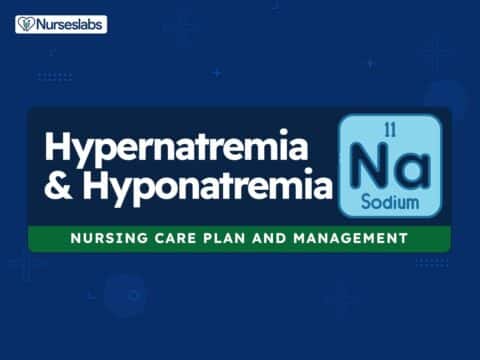


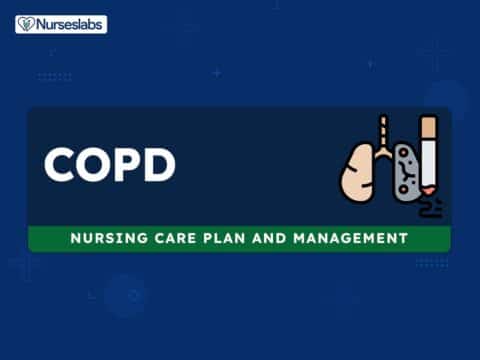



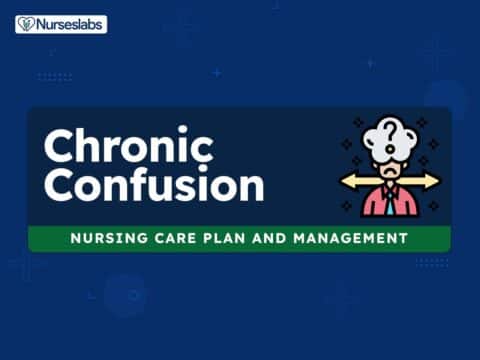






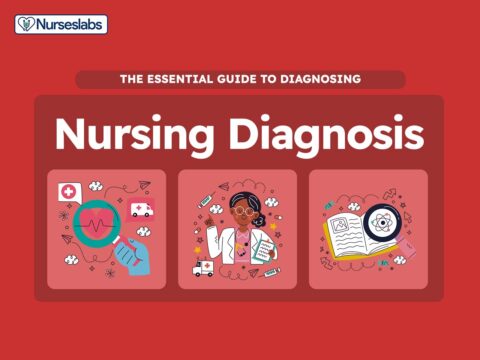

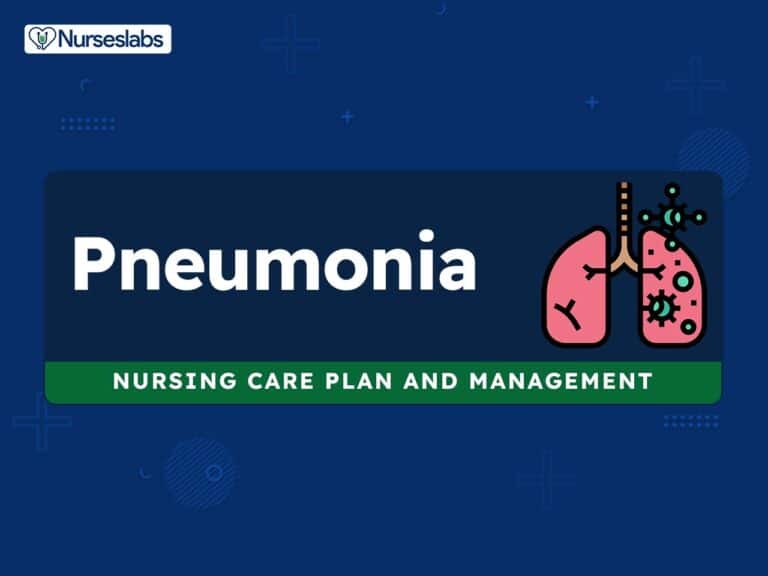




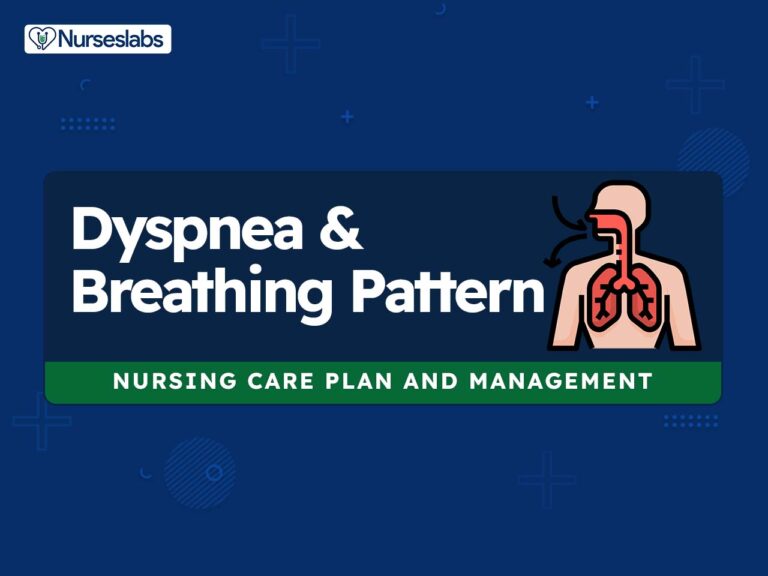





Leave a Comment